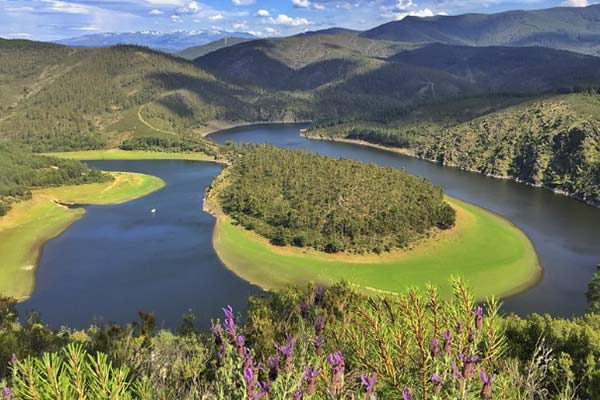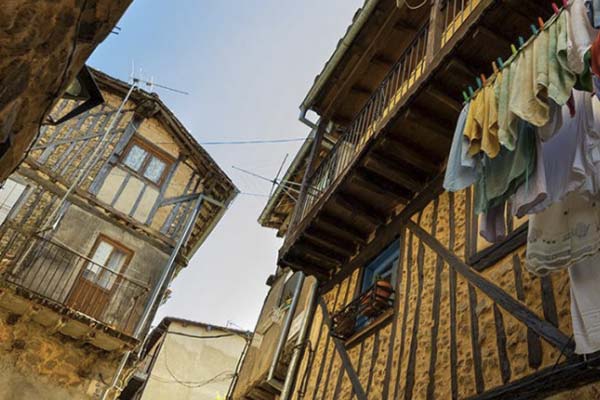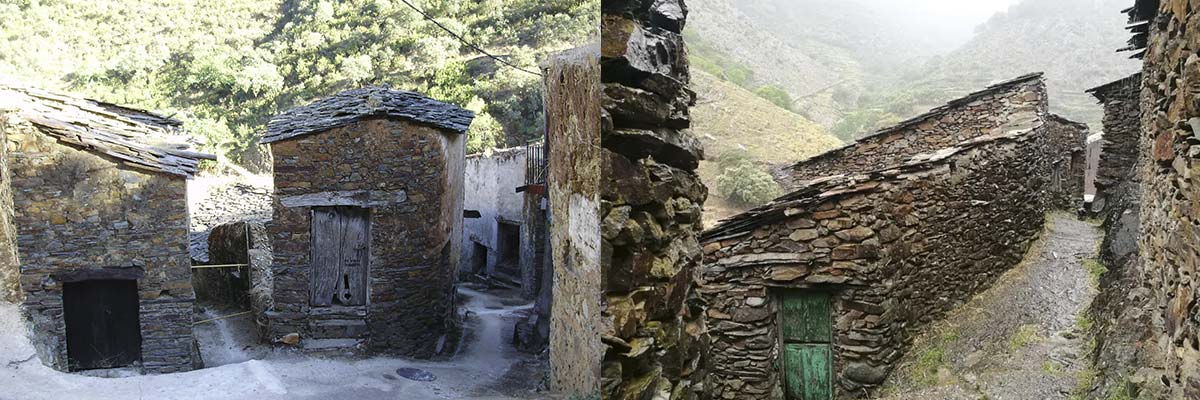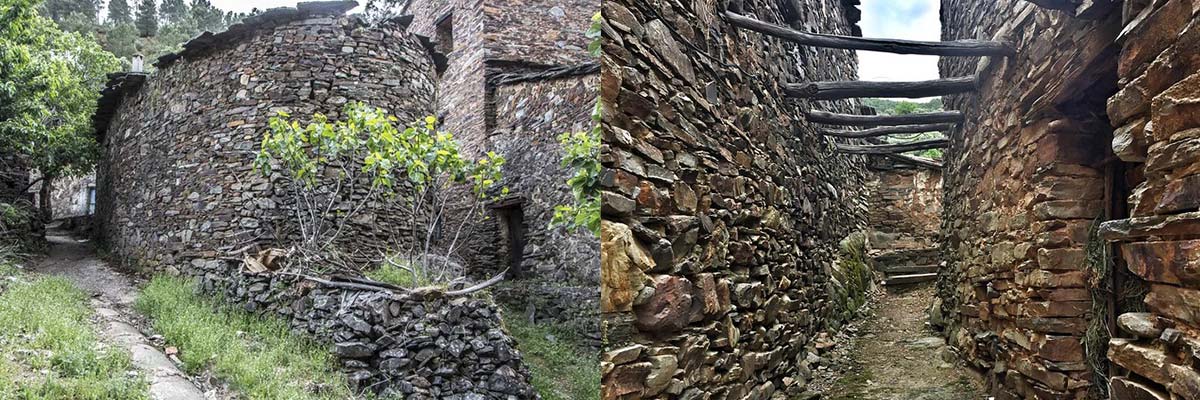The fourth place on this list of my favorite villages is located in Las Hurdes, a region in the northwest of the province of Cáceres, and is called Riomalo de Arriba. This is not to be confused with Riomalo de Abajo, which is about 25 kilometers away.
Interesting fact: it only has one inhabitant left in the village, a friendly chap called Abelardo. So, what makes this abandoned village so special?
One of the things that makes Riomalo de Arriba appealing to me is its unique “arquitectura negra” or black architecture (common to the Las Hurdes region) so-named because of the slate used in this building style. The steep and irregular ground conditioned the construction of small, simple one-storey houses with slate roofs, and meager doors and windows to the outside. With a round or square floor plan, the houses had two well-differentiated parts: a domestic one, made up of a bedroom and kitchen, and another aerea for the animals.
My first visit to this area dates back to the early 80’s. I was flabbergasted. I had traveled a lot but I had never seen such compelling images of poverty. Back then, the village had many more inhabitants than just the one, and disturbingly several suffered from goiter, whose main symptom is a heavily enlarged thyroid gland in the neck, due to a lack of iodine.
My traveling companions and I were embracing our inner hippies with our flower-emblazoned car (blasting the Doors, Joy Division etc from the speakers on its roof) and our barefeet, long hair and ZZTop-type beards. The locals looked at us as if were from another planet. And we looked right back at them in the same way. A full-blown culture shock.
Batuecas/Riomalo Excursion.
You can combine a visit to Riomalo de Arriba with several other interesting and attractive places to make up the following route:
First of all, head for the Valley of the Batuecas. Walk along the side of the Convent (closed except for those on spiritual retreats) to see the cave paintings that are preserved nearby. In the summer months bathe in the natural pools about 30 minutes walk up along the Batuecas River.
Later, go down to Las Mestas, and take the opportunity to taste Ciripolen, a magical drink full of history, at Casa Cirilo.
From there, the route continues to Riomalo de Arriba, which we have just talked about, passing through Cabezo and Ladrillar. When you have visited Riomalo de Arriba double back on yourself and follow signs to Riomalo de Abajo, where you can drive or walk up to the beautiful Meandro el Melero viewpoint.

After leaving the Mirador follow signs to Sotoserrano, Cepeda and Miranda del Castañar (a visit to this hilltop town is highly recommended).

The last stop is Valero, a town whose inhabitants are dedicated above all to beekeeping, which has another beautiful natural pool. From there you go up a winding road to San Miguel de Valero where this route ends.
As you can see, it is well worth getting lost in Las Hurdes and enjoying the area first-hand. I hope you find it as magical as I do.
For more insight into this place shortly before the time I first visit, I highly recommend Luis Buñuel’s iconic film “Las Hurdes – Tierra sin pan” (Las Hurdes: land without bread), a film banned by Franco because of the backward image it projected of Spain. Shot in 1933, it was originally silent, but later music and narration were added. The narrator’s exaggerated descriptions of the human misery of Las Hurdes contrast with the flat and disinterested attitude of its inhabitants.
“Las Hurdes – Tierra sin pan”
In the following links you can see videos about Riomalo de Arriba and about Las Hurdes.




